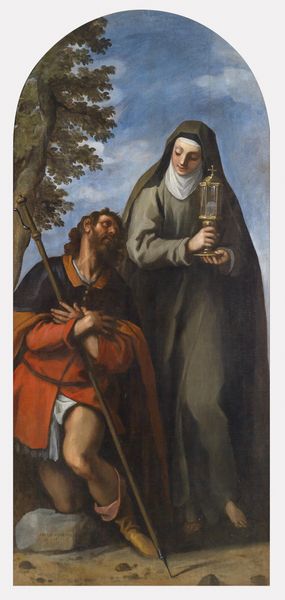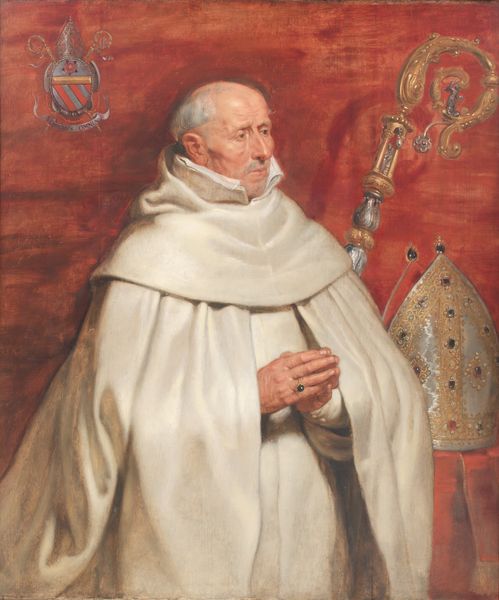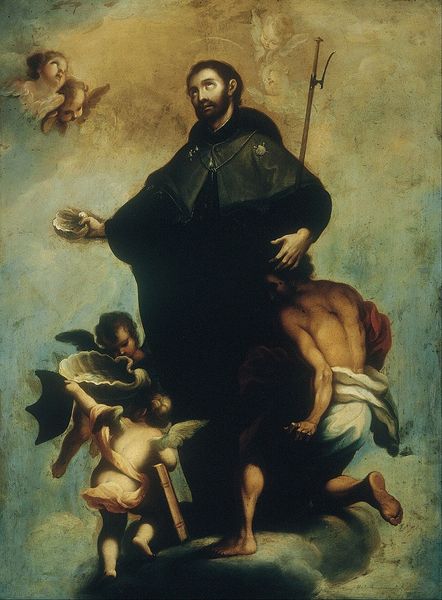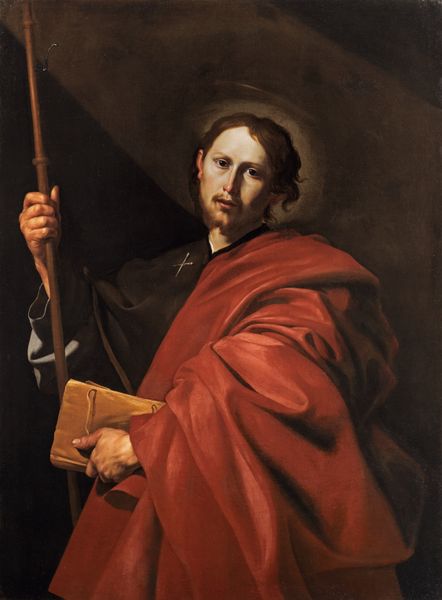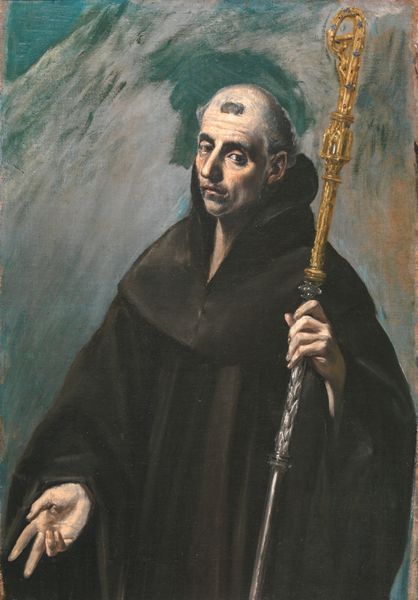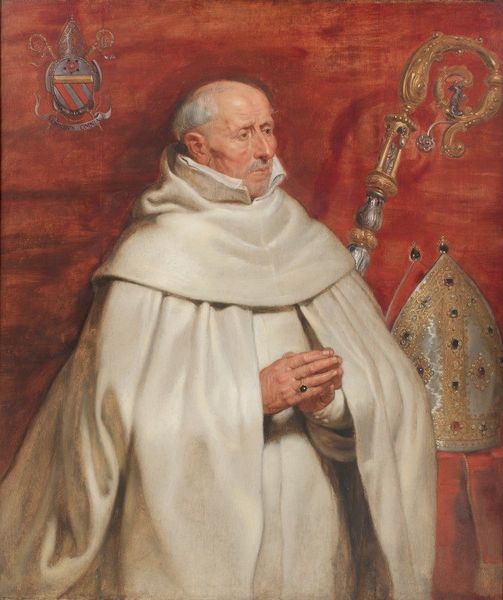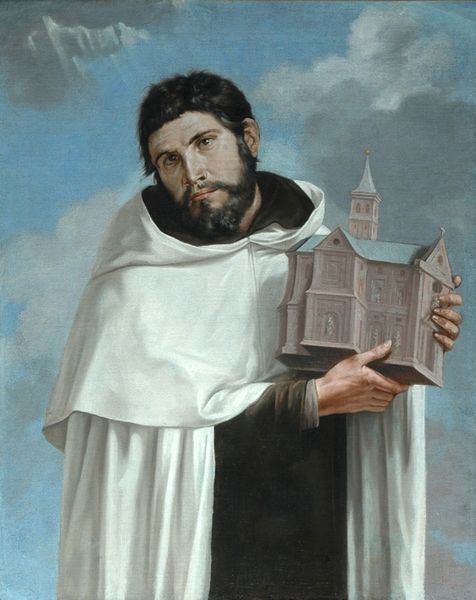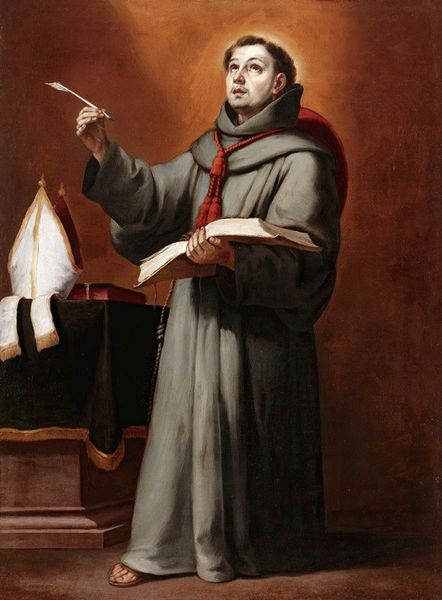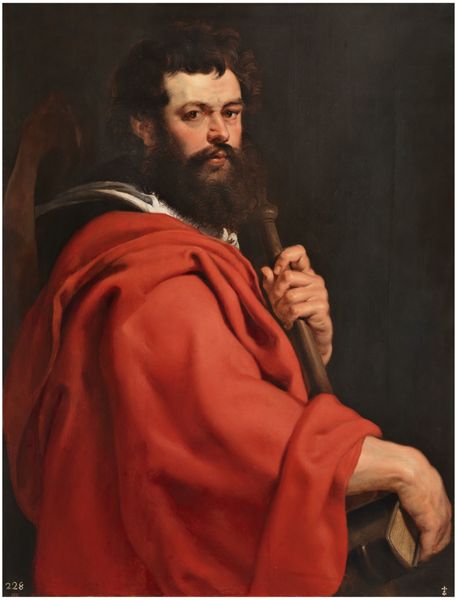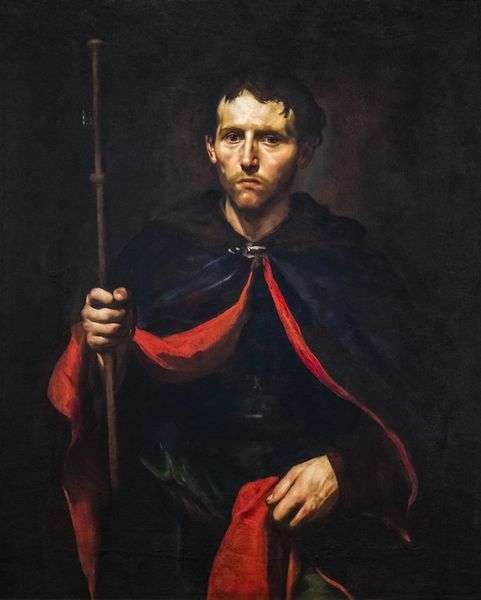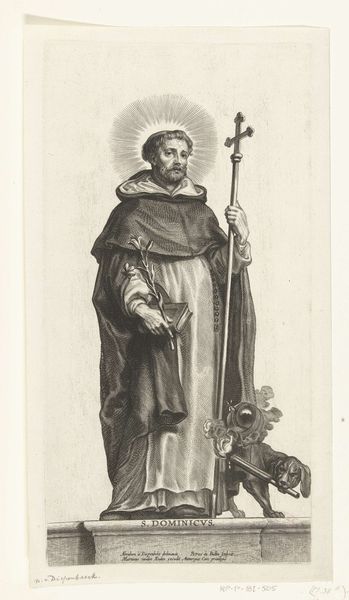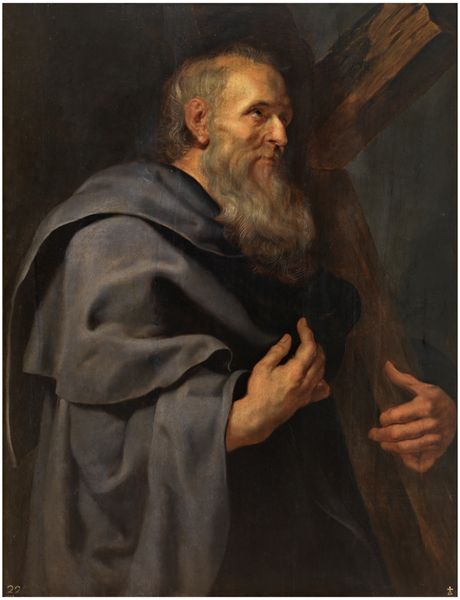
oil-paint
#
portrait
#
baroque
#
oil-paint
#
holy-places
#
figuration
#
oil painting
#
academic-art
#
portrait art
Copyright: Public domain
Curator: This is Claudio Coello’s “Saint Dominic of Guzmán,” painted in 1685. What are your first impressions? Editor: Immediately, it strikes me as a painting about power, particularly institutional power, emanating from this figure. The halo seems almost like a crown. Curator: It's interesting that you mention power because, for me, what stands out are the precise details in Coello's use of oil paint. Look at the drapery—how the heavy folds create light and shadow to suggest depth and volume, practically inviting us to reach out and touch the fabric. Consider the socio-economic forces that allowed for this artistic skill, including who provided the material resources. Editor: Indeed, those details speak to the affluence supporting these artworks. But let's delve deeper into that context. This saint founded the Dominican Order, known for its role in the Inquisition. How does that knowledge impact our viewing experience? Does it glorify the repression justified by religious dogma? Curator: It prompts questions about the patrons and the artistic commissions of that time, surely. I tend to see this piece in terms of art historical trends that defined that era. The Baroque style, for instance, often used dramatic lighting to heighten the emotional impact, something that required knowledge of painting techniques that only artisans in those guilds possessed. Editor: I agree that Coello employed striking techniques, and that guilds played a key role in shaping the production of paintings like this. But considering Saint Dominic’s impact, I feel compelled to confront art history head-on. We can ask how figures such as St. Dominic have contributed to systems of oppression through patriarchal models and intolerance toward people who were labeled “heretics”. The cross he's carrying and even the dog with the torch imply violence in converting non-believers. Curator: Well, understanding the value and origins of materials--even the pigments themselves--is vital in fully appreciating paintings like this, along with the social labor involved. Knowing who the artist worked for tells part of the story, too. Editor: And that, for me, reveals an uncomfortable truth: we can appreciate the artistry, but we must remain aware of what these figures represented, their participation in deeply troubling histories, and the systems of power that they enacted. This portrait does a lot of work, but understanding how it perpetuates problematic ideas is key. Curator: Examining Coello’s craftsmanship alongside the historical context and the value placed on art production provides a thorough appreciation for the piece, don’t you think? Editor: I feel the urgent need to consider and reveal all the messy historical contexts that artworks like this emerge from, not in spite of aesthetic experience, but precisely because it demands it.
Comments
No comments
Be the first to comment and join the conversation on the ultimate creative platform.
